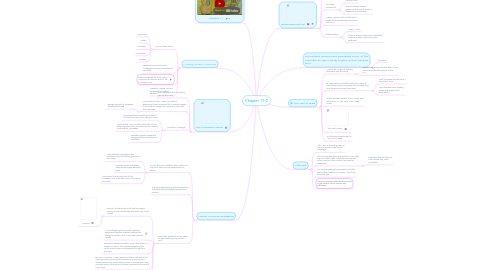
1. Moving Native Americans
1.1. Five Civilized Tribes
1.1.1. Cherokee
1.1.2. Creek
1.1.3. Seminole
1.1.4. Chickasaw
1.1.5. Chotow
1.2. Few white americans lived in Mississippi because it was dry and unsuitible
1.3. Settlers proposed to force Native Americans to relocate west of the Mississippi River.
1.4. President Andrew Jackson supported the settlers demand.
2. The Cherokee Nation
2.1. The Cherokee nation refused to give up their land
2.2. In the treaties of the 1790's, the federal government had recognized the cherokee people in the state of Georgia as a separate nation with their own laws.
2.2.1. Georgia refused to recognize the cherokees laws
2.3. Worcester v. Georgia
2.3.1. Cherokees sued the state government and took the case to the supreme court
2.3.2. Chief Justice John Marshall ruled that only the federal government had authority over matters involving the Cherokees
2.3.3. President Jackson supported Georgias efforts to remove the Cherokee
3. Native American Resistance
3.1. In 1832 the Sauk Chieftain, Black Hawk, led a force of Sauk and Fox people back to Illinois.
3.1.1. They wanted to Recapture their homeland, which had been given up in the treaty
3.1.2. The state militia and about 4,500 troops responded with force
3.1.3. They chased the fox and Sauk to the Mississippi river and killed most of the native americans
3.2. The Seminole people of Florida where the only ones who successfully resisted their removal.
3.3. They were Pressured in the 1830s to sign treaties giving up their land
3.3.1. Osceola, the seminole chief, and his people refuse to leave Florida they decided to go to war instead
3.3.1.1. Osceola
3.3.2. In 1835 they joined forces with runaway slaves and together attacked settlements along the Florida coast. They used Guerrilla Tactics.
3.3.3. Seminole ambushed soldiers. Only a few of the 110 Soldiers Survived. The Massacre pressured the call for more troops and equipment to fight the Seminole
3.3.4. By 1842, more than 1,500 American soldiers had died in the Seminole wars. Eventually the Government gave up and allowed some of the seminole to remain in Florida, But many Seminole Died in the war or had been captured and forced to move west.
3.3.5. Many Seminole died in the war or had been captured and forced to move west.
4. Chapter 11
5. The Federal Government persuaded some of the Cherokee to sign a treaty to give up their peoples land
5.1. [Number]
6. After war
6.1. After 1842 only a few groups of native americans lived east of Mississippi
6.2. Native americans gave up more than 100 million acres of eastern land. They had received $68 million and 32 million acres in land west of Mississippi
6.2.1. Eventually this land too will face intrusion by White civilazation
6.3. U.S. army leaders got agreements to let the Five Civilized Tribes live in peace. And thats what they got.
6.4. The Five Civilized Tribes were relocated in the eastern half of present day Oklahoma.
7. Indian Removal act
7.1. Congress responded by making the Indian removal act in 1830
7.2. The indian removal act
7.2.1. Made in 1830
7.2.2. The act allowed Federal government to pay the Native americans to move west
7.3. Andrew Jackson sent out officials to negotiate the treaties with the native americans
7.4. Indian territory
7.4.1. Made in 1834
7.4.2. It was an area in present day Oklahoma, Made for Native Americans in the Southeast
8. The Trail of Tears
8.1. Most of the 17,000 Cherokees refused to sign the treaty
8.1.1. Instead they wrote a protest letter to the Government and the people of the U.S.
8.2. In 1838 General Winfield Scott and an army of 7,000 troops came to remove the Cherokee from their homes and move them west
8.2.1. Scott threatened to use force if they didn't leave
8.2.2. The Cherokee knew fighting would only lead to their destruction
